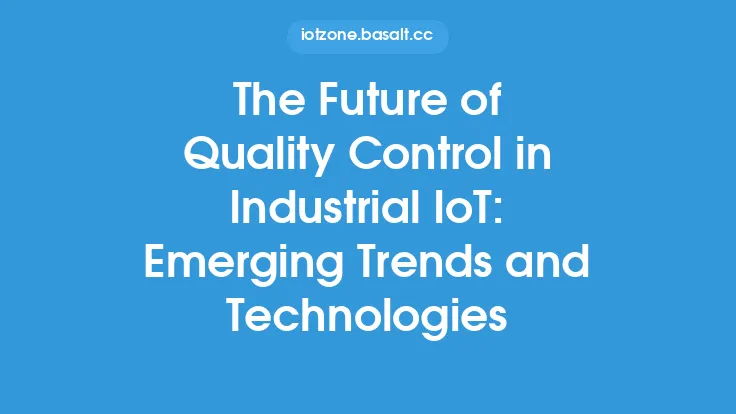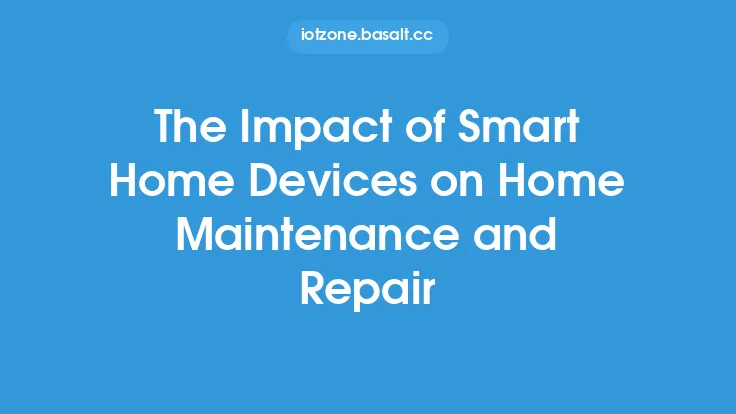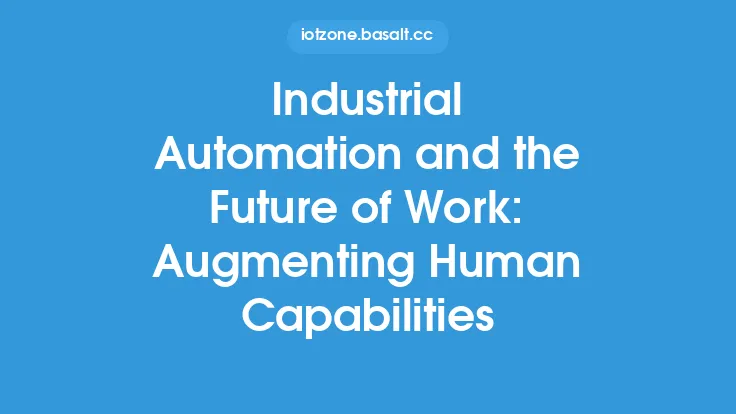The increasing complexity of industrial operations has led to a growing need for efficient maintenance strategies. Traditional maintenance approaches, such as reactive and preventive maintenance, have been widely used in the past. However, these methods have significant drawbacks, including high maintenance costs, reduced equipment lifespan, and increased downtime. Predictive maintenance has emerged as a game-changer in the industrial sector, offering a proactive approach to maintenance that leverages advanced technologies, such as sensors, IoT devices, and data analytics, to predict equipment failures and schedule maintenance accordingly.
Introduction to Predictive Maintenance
Predictive maintenance is a condition-based maintenance approach that uses real-time data and advanced analytics to predict when equipment is likely to fail or require maintenance. This approach enables industrial operators to schedule maintenance activities during planned downtime, reducing the likelihood of unexpected equipment failures and minimizing the impact on production. Predictive maintenance involves the use of various technologies, including vibration analysis, thermography, and oil analysis, to monitor equipment condition and detect potential issues before they become major problems.
Key Components of Predictive Maintenance
Several key components are essential for a successful predictive maintenance program. These include:
- Data collection: The use of sensors and IoT devices to collect real-time data on equipment performance and condition.
- Data analysis: The application of advanced analytics and machine learning algorithms to analyze collected data and identify patterns and trends.
- Condition monitoring: The use of various technologies, such as vibration analysis and thermography, to monitor equipment condition and detect potential issues.
- Predictive modeling: The development of predictive models that use historical data and real-time inputs to forecast equipment failures and maintenance needs.
- Maintenance scheduling: The use of predictive insights to schedule maintenance activities during planned downtime, minimizing the impact on production.
Benefits of Predictive Maintenance
The implementation of a predictive maintenance program can have a significant impact on industrial operations and efficiency. Some of the key benefits include:
- Reduced downtime: Predictive maintenance enables industrial operators to schedule maintenance activities during planned downtime, reducing the likelihood of unexpected equipment failures and minimizing the impact on production.
- Increased equipment lifespan: Predictive maintenance helps to identify potential issues before they become major problems, reducing the risk of equipment damage and extending equipment lifespan.
- Improved maintenance efficiency: Predictive maintenance enables maintenance teams to focus on proactive maintenance activities, reducing the time spent on reactive maintenance and improving overall maintenance efficiency.
- Cost savings: Predictive maintenance can help reduce maintenance costs by minimizing the need for emergency repairs, reducing equipment damage, and optimizing maintenance schedules.
Technical Requirements for Predictive Maintenance
The implementation of a predictive maintenance program requires a range of technical capabilities, including:
- Data management: The ability to collect, store, and manage large amounts of data from various sources, including sensors, IoT devices, and maintenance systems.
- Advanced analytics: The application of advanced analytics and machine learning algorithms to analyze collected data and identify patterns and trends.
- Condition monitoring technologies: The use of various technologies, such as vibration analysis and thermography, to monitor equipment condition and detect potential issues.
- Integration with maintenance systems: The integration of predictive maintenance systems with existing maintenance systems, such as computerized maintenance management systems (CMMS) and enterprise asset management (EAM) systems.
Implementation Challenges and Considerations
While predictive maintenance offers significant benefits, its implementation can be challenging. Some of the key challenges and considerations include:
- Data quality and availability: The quality and availability of data can have a significant impact on the accuracy of predictive models and the effectiveness of predictive maintenance programs.
- Technical expertise: The implementation of a predictive maintenance program requires specialized technical expertise, including data analytics, condition monitoring, and maintenance engineering.
- Cultural and organizational change: The implementation of a predictive maintenance program may require significant cultural and organizational changes, including changes to maintenance workflows, processes, and procedures.
- Return on investment (ROI): The implementation of a predictive maintenance program requires a significant investment in technology, personnel, and training, and industrial operators must carefully consider the potential ROI and payback period.
Real-World Applications and Case Studies
Predictive maintenance has been successfully implemented in a range of industries, including manufacturing, oil and gas, and transportation. Some examples of real-world applications and case studies include:
- Predictive maintenance in manufacturing: A leading manufacturer of industrial equipment implemented a predictive maintenance program that used vibration analysis and thermography to monitor equipment condition and detect potential issues. The program resulted in a 25% reduction in downtime and a 15% extension of equipment lifespan.
- Predictive maintenance in oil and gas: A major oil and gas company implemented a predictive maintenance program that used advanced analytics and machine learning algorithms to predict equipment failures and schedule maintenance accordingly. The program resulted in a 30% reduction in downtime and a 20% reduction in maintenance costs.
- Predictive maintenance in transportation: A leading transportation company implemented a predictive maintenance program that used sensors and IoT devices to monitor vehicle condition and detect potential issues. The program resulted in a 20% reduction in downtime and a 15% extension of vehicle lifespan.
Conclusion
Predictive maintenance is a powerful tool for improving industrial operations and efficiency. By leveraging advanced technologies, such as sensors, IoT devices, and data analytics, industrial operators can predict equipment failures and schedule maintenance accordingly, reducing downtime, increasing equipment lifespan, and improving maintenance efficiency. While the implementation of a predictive maintenance program can be challenging, the benefits are significant, and industrial operators must carefully consider the potential ROI and payback period. As the industrial sector continues to evolve, predictive maintenance is likely to play an increasingly important role in driving efficiency, productivity, and competitiveness.





